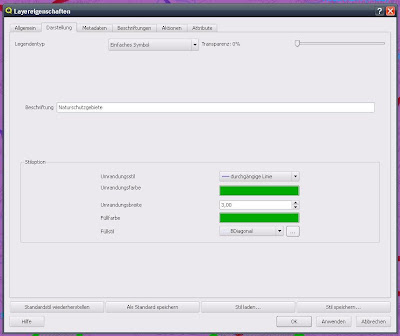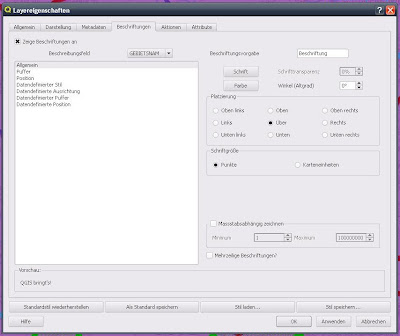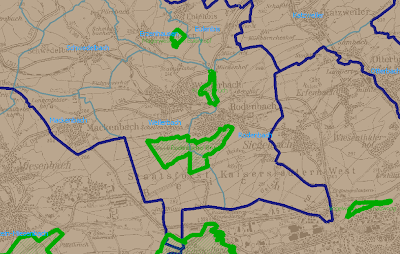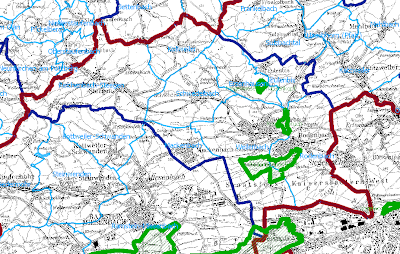















first What is an ellipsoid?
- Ellipsoid = higher-dimensional equivalent of an ellipse
- three-dimensional shape whose surface can be described mathematically
à coordinates can be given for the positions on the surface

2. What is the name of the ellipsoid used in the GK system?
Bessel or Krassowskiellipsoid
third What is the difference between geographic and projected Cartesian coordinates?
Cartesian, projisziertes coordinate system:
- is orthogonal coordinate system
- is used in two-and three-dimensional space à geometrical facts describe
- coordinates (points in space) can be expressed in terms of two and three mutually orthogonal axes
geographical coordinates:
- point on the earth's surface can be on latitude, longitude and ellipsoidal height describe
4th Which projection is based on the Gauss-Krüger system? (Short explanation)
- GK system = transverse Mercator projection
- Based on the Bessel ellipsoid Georeferenzmodell

5th What advantages does a Cartesian coordinate system?
- rectangular axes
- easy description of geometric shapes and figures
- geometric problems solvable computationally
6th Which units are to GK coordinates?
X and Y values are specified in the GK system in meters.
X value = distance from the equator to the length faithfully depicted the central meridian to Ordinatenfußpunkt
Y value = distance from the central meridian to the point
7th What is in this context, the term "Meridian"?
- Latin for "vicious Meridianus" = lunch circle
- half longitude on Earth's surface
- runs from one pole to the other
- is the connecting line of all geographic locations where the sun at the same time the highest point of their day career in the sky occupies
- all points with the same longitude are on the same meridian
- length of a meridian on the WGS84 Referensellipsoid about 20003.9 km
- certain meridians limit the time zones where the earth is divided

8th Why are used in the GK system called meridian strip?
- Around the World in 3 ° (or 6 °) wide strips split
- to represent the earth with as little distortion
9th How to recognize the code used in the GK-strip to a coordinate?
- The code is derived from the classic definition of the integer multiples of 3 ° for the central meridian (0 °, 3 °, 6 ,...):
ratio = (0 °, 3 °, 6 °, ..., 351 °, 354 °, 357 °) / 3
- The code is the law of value (y value) written above the Gauss-Krüger coordinates.
10th Which formula can be the easiest of the central meridian of any GK-strip charge?
code * 3 ° (or * 6 °) (applies to a band of 1 to 59)
120 - code * 3 ° (or * 6 °) (effective strip 60)
11th They translate the terms "Easting" and "Northing" in the current context.
"Easting = Easting
" Northing = Northing
12th What is meant by the term "False Easting and False Northing"?
"False Easting" = fixed Easting
(northern hemisphere: 500 000 m)
(southern hemisphere: 500 000 m)
"False Northing" = fixed high value
(northern hemisphere: 0)
(southern hemisphere: 10 000 m)
13th If False Easting and False Northing "used in the GK system? (Why? Or why not?)
Since Germany is in the northern hemisphere, is only "false easting" needs of 500,000, but not a "false northing".
14th Explain briefly the letters 'OGC', "SRS" and "EPSG code.
OGC = Open Geospatial Consortium
The Open Geospatial Consortium (OGC) is a 1994 founded, renamed (formerly the Open GIS Consortium) in 2004, consolidation of all relevant GIS vendors, GIS users (authorities, companies) and organizations that has set itself the goal of to improve the use of GIS and spatial data by establishing standards.
SRS Spatial Reference System
The spatial reference system (English spatial reference system , SRS) is the sum of Definitions (Coordinate system, control points, leaf sections) that orchestrate the scheme of the reference location of spatial objects in a GIS. The spatial reference system (SRS) can be specified by a mathematical formula. In the context of the OGC all SRS in the EPSG syntax (European Petroleum Survey Group) are encoded.
EPSG codes
EPSG (European Petroleum Survey Group)
system of globally unique 4 - to 5-digit codes for coordinate reference systems
15th Which "EPSG codes" are used in Germany (when using the GK system)?
for GK 2 31 466
31 467 for GK 3
31 468 for GK 4
31 469 for GK 5